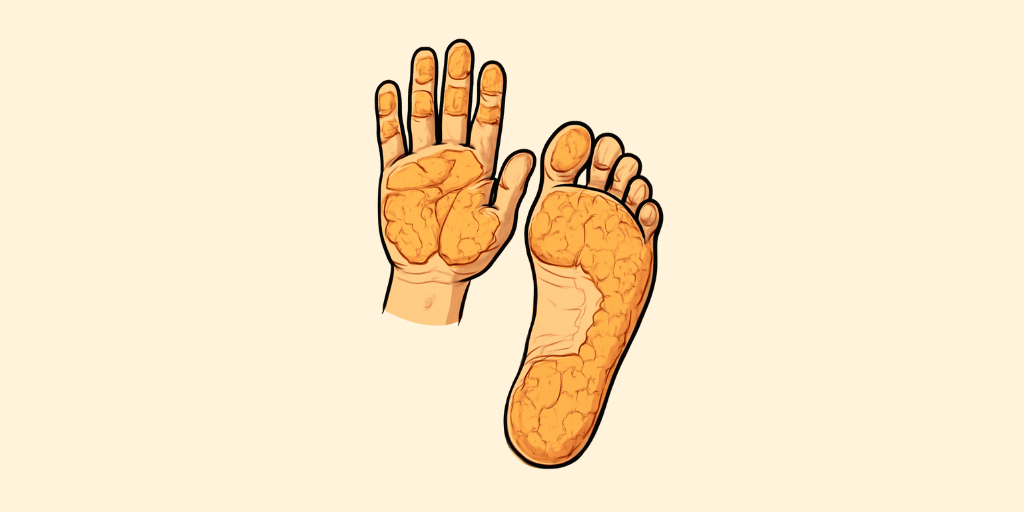Ayurvedic Name: Vipadika
Description:
This condition affects the palms and soles, causing deep cracks, fissures, and severe pain. It occurs due to Vata aggravation, which leads to excess dryness, peeling, and occasional bleeding. Modern correlation: Palmar-plantar keratoderma or Chronic Hand Dermatitis. Ayurveda advocates Ghee-based formulations like Panchatikta Ghrita, Abhyanga (Oil massage with Castor oil and Sesame oil), and Triphala Kwath for internal healing.
Signs & Symptoms:
Vipadika is characterized by Kushta (Skin Lesions), Rukshata (Dryness), Sotha (Swelling), Kandu (Itching), and Sula (Pain) in the affected areas.
Diagnosis:
Lymphoscintigraphy
Risk Factors:
- Dietary Factors: A diet high in salt, sugar, and processed foods can contribute to Vipadika (painful boils or skin infections). Eating foods that increase inflammation and disturb the body’s natural balance can worsen the condition.
- Lifestyle Factors: Exposure to pollution, poor hygiene, and stress can aggravate symptoms of Vipadika. Lack of sleep, dehydration, and improper skincare can also exacerbate the condition.
Complications:
- Skin Boils (Vipadika): Formation of painful boils on the skin due to bacterial infection or internal imbalances.
- Fever (Jwara): Increased body temperature as a response to infection.
- Swelling (Sotha): Swelling around the affected area as the body tries to fight the infection.
Epidemeology:
Vipadika (Boils) is prevalent in individuals with compromised immune systems, poor hygiene, or those suffering from skin infections. The condition is more common in individuals with diabetes or obesity.

